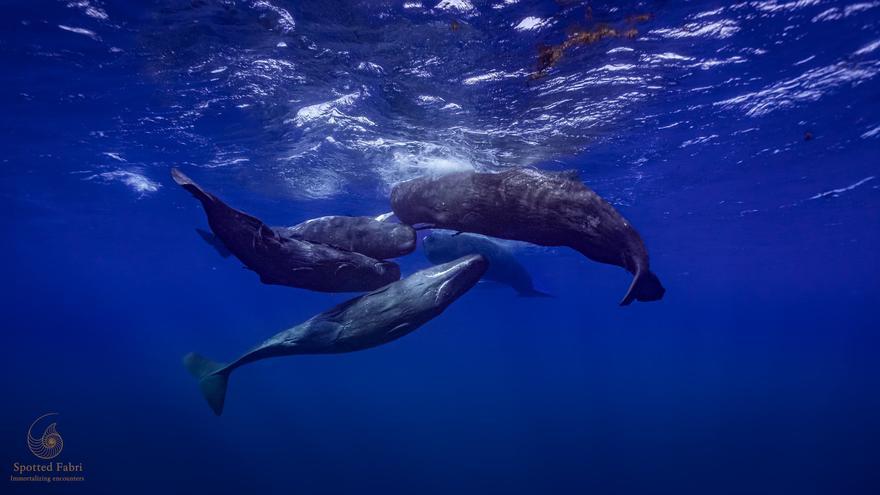A tragic wake-up call for marine conservation
Painful images for anyone, and even more so for a marine biologist. A few weeks ago, the coast of Tenerife witnessed the death of two sperm whales—one stranded and the other floating adrift in the sea. This tragic situation has prompted professionals to raise their voices once again, warning of the escalating risks facing these magnificent cetaceans and others in Canarian waters.
The Canary Islands: A unique sperm whale habitat
In the case of sperm whales, it’s remarkable that unlike in other parts of the world, in the Canary Islands they are frequently seen close to the surface throughout the year. This makes the archipelago a true paradise for observing these majestic creatures—until recreational or fishing boats end up colliding with them. The waters surrounding the islands offer visitors and residents alike extraordinary opportunities to witness these ocean giants, but this proximity also creates unprecedented dangers.
A growing conservation crisis
This is a long-standing concern among professionals, but one that has become increasingly urgent in recent months due to the drastic reduction in the population of these animals in the seas around the islands. Publicity campaigns and complaints on social networks—any channel is valid for alerting the population and, above all, public institutions about the consequences for the future of the species.
One of the most commented posts has been published by marine biologist Pablo Dive, who shared the transfer of the body of one of these decapitated sperm whales. “A tremendous rage and sadness on seeing such an impressive animal with its head cut in half,” summarizes the professional, who defends sharing these images as necessary for raising awareness.
Confronting harsh realities
With a broken heart, Dive understands that the reality must be seen: “We have a problem that we can no longer ignore,” he points out, before defining the situation as “sad and worrying.” As the biologist recalls, in recent years “sperm whale heads have been appearing constantly, or the animals have been broken in half.”
“A small boat does not do this. And they don’t have a predator that is capable of doing it either,” says the expert, who vividly recalls the first time he had the opportunity to see a live specimen of this type of cetacean. He also offers crucial advice to the public should they encounter a stranded specimen or one in a similar situation on the Canary Islands’ coasts.
What to do if you encounter a stranded whale
In addition to calling the Emergency and Security Coordination Centre (Cecoes) 112 to take charge of the rescue or removal, Pablo Dive recommends not touching the animal and keeping your distance. This guidance is essential for both residents and visitors who might encounter such situations while exploring the islands’ stunning coastlines.
Record-breaking ocean giants
The sperm whale is a record-breaking animal: the largest predator in the ocean, the one that emits the most powerful sounds to echolocate its prey at a distance in the dark immensity of deep waters, possessing the most gigantic nose on the planet (necessary to emit its powerful echolocation clicks) and the largest brain in the animal world.
“Despite this large brain, they have not yet learned to avoid collisions with ships,” regret researchers from the IEO and the ULL, who use traffic on land to explain the risk of sailing: “We humans set speed limits for traffic in inhabited areas; we do not allow cars to accelerate to the maximum of their possibilities, but in the ocean the speed limit is set by technology.”
The escalating threat of maritime traffic
In this respect, they point out that in the same lifespan as a sperm whale—some 70 years—both the speed of ships and the number of vessels sailing in the habitat of these cetaceans have doubled. This dramatic increase directly impacts the waters around the Canary Islands, where whale-watching tourism and maritime traffic intersect.
Additionally, ships affect the rest that sperm whales take on the surface before performing “their diving feats.” “If they interrupt their rest every time they hear a vessel approaching, they will not be able to recover their strength to hunt at a depth of about three kilometers and in apnea for two hours,” the scientists explain. This disruption threatens not only individual whales but the entire ecosystem that makes the Canary Islands such a remarkable destination for marine wildlife enthusiasts.


